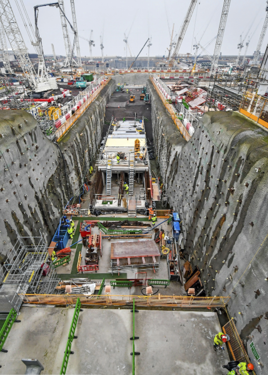When John Aspinall’s Lancashire and Yorkshire Railway (LYR) decided to electrify its line between Liverpool and Southport in 1902, it had to build its own power station to supply the trains with current.
There were no other suitable electricity suppliers. Aspinall was wiring his railway only a little over 20 years after the first buildings in Britain were equipped with electric light bulbs.
Today, an electrification scheme would tap into the national grid and buy power from any of a number of suppliers.
Rail back then was a private enterprise. To expand or upgrade, the LYR needed to raise capital, which was not easy then… as it is not easy now.
Aspinall noted: “There is nothing so coy as capital, and if it is to be won, it must be by convincing arguments, and not by the doubtful pleadings of conflicted interests.”
He also said: “It is obviously of great importance also that where a large amount of additional capital is being spent, it should be made to earn money at the earliest possible date so as to avoid loss of interest.”
In other words, once you’ve secured the capital, spend it on your project as quickly as possible so that you can reap the benefits. For companies such as the LYR, the benefits would come from increased traffic bringing in extra money and lower costs cutting outgoings.
Aspinall was perceptive when it came to his passengers: “The public are not likely to pay more than they do at present, and it is therefore a question as to whether electrical working would induce much larger numbers to travel and to travel more frequently.”
LYR train planners found it possible to path electric stopping trains more easily than steam ones between express steam services, so that both could be accommodated on the same lines. This allowed the company to close waiting rooms and to remove staff from stations with four platforms, because passenger traffic now used only two.
The electric service was more efficient. The power station at Formby burned 49lb of coal per train-mile, whereas steam stopping services were burning 100lb per train-mile when they were temporarily accelerated to electric timings in the transition phase when electric trains entered service.
So, after authorising the electrification in October 1902, the LYR’s board would see the first electric train running on test in December 1903, and carrying passengers in March 1904. In May 1904, the LYR withdrew steam stopping services.
Compare this with the prevarication over wiring plans for the Trans-Pennine and Midland Main Lines over the past decade.
Where’s the money?
Today’s railway has plenty of plans, but no money to deliver them. For infrastructure projects, the railway has long relied on government coffers, but government has also had its fingers burnt with major projects (such as Great Western’s electrification) running very late and hugely over budget. So, no one should be surprised that government is reticent when it comes to enhancing the current railway.
What, then, of private money? Well, it’s worth revisiting Sir Michael Holden’s words in RailReview Q1-2022: “Many suppliers are very nervous about the short-term future, unsure what the effects will be on their businesses, but suspecting that they will be negative. The absence of progress on the much-trumpeted rail enhancements pipeline, the failure to translate the published rail decarbonisation policy into a programme, and the likely looming reduction on maintenance and renewals expenditure on CP7 together suggest a gloomy outlook for rail investment over the next five years or so.”
So, remind me why private investors should put their money into rail?
Then there’s the government’s decision to dump public-private partnerships. On one level, there’s a feeling that government doesn’t like private companies making money from public services. On another, there’s the evidence that PPP deals were costly, inefficient, and didn’t deliver what they promised.
As Chancellor of the Exchequer in 2018, Philip Hammond told Parliament: “In financing public infrastructure, I remain committed to the use of public-private partnership where it delivers value for the taxpayer and genuinely transfers risk to the private sector, but there is compelling evidence that the private finance initiative does neither… I have never signed off a PFI contract as Chancellor, and I can confirm today that I never will. I can announce that the Government will abolish the use of PFI and PF2 for future projects.”














